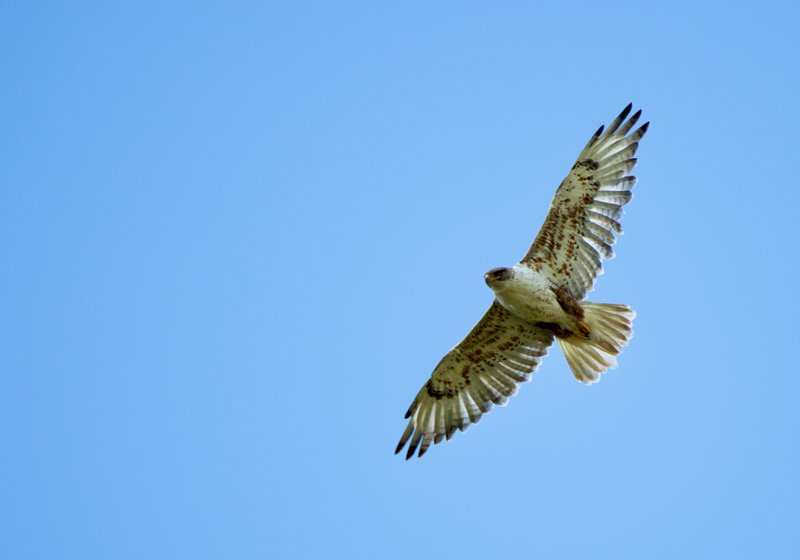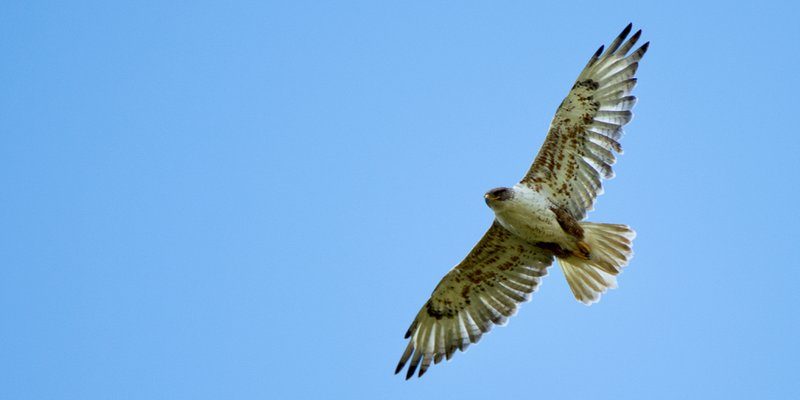
As sprawling cities and agriculture encroach on their habitats, conservation efforts have become crucial for their protection. Think of these efforts like a lifeline, aimed at ensuring that this incredible species doesn’t vanish. In this article, we’ll explore the conservation initiatives focused on safeguarding Ferruginous Hawks, highlighting the importance of these efforts not just for the hawks but for the entire ecosystem they inhabit.
What Makes the Ferruginous Hawk Unique?
First off, let’s dive into what sets the Ferruginous Hawk apart. These birds are the largest in their family in North America, with a wingspan that can reach up to five feet. Their striking plumage, often described as having a rusty or ferruginous hue, makes them a sight to behold against the blue sky. The Ferruginous Hawk is often found in open fields and grasslands, hunting small mammals like rabbits and rodents.
They are known for their incredible flying skills. Watching one dive from the sky to catch a meal is truly a spectacle. Their adaptability is remarkable; they thrive in various environments, from arid deserts to grassy plains. But this adaptability only goes so far when their habitats are under threat.
Threats to the Ferruginous Hawk Population
It’s essential to understand what challenges these magnificent birds face. Habitat loss is the most significant threat, primarily due to urban development and agricultural expansion. As fields and wild areas are converted into farmland or urban centers, Ferruginous Hawks lose vital nesting and hunting grounds.
Additionally, pesticides and rodenticides used in agriculture can poison the small mammals that hawks feed on. Over time, these chemicals accumulate in their bodies, leading to health issues or even death. There’s also the risk of collision with vehicles or power lines, which can be fatal.
Lastly, climate change is altering their habitats. Changes in temperature and precipitation patterns can impact the availability of prey, making it harder for these hawks to thrive. So, what can we do about it?
Grassroots Conservation Initiatives
Many organizations and communities have stepped up to protect the Ferruginous Hawk. Grassroots conservation efforts often involve local communities working together to safeguard and restore habitats. These initiatives can include creating protected areas where hawks can nest and hunt without the threat of human interference.
For example, some projects focus on reforestation and habitat restoration, reintroducing native plant species that attract the small mammals Ferruginous Hawks rely on. Volunteers often participate in such projects, planting trees and cleaning up litter to promote a healthier environment.
Involving the community is also vital. Education programs teach people about the importance of these birds and their roles in the ecosystem. When people understand what’s at stake, they’re more likely to support conservation efforts.
Research and Monitoring Programs
Another critical aspect of conservation is research. Scientists are studying the Ferruginous Hawk’s behavior, migration patterns, and breeding habits to understand better how to protect them. This research helps identify crucial habitats that need protection and can influence policy decisions.
Monitoring programs keep track of hawk populations and health. By using methods like satellite tracking, researchers can learn about their movements and how they interact with their environment. This data is invaluable in shaping effective conservation strategies.
For example, when researchers discover that a specific area is crucial for nesting, conservationists can push for protections or manage that region to minimize human interference. It’s like having a map that shows the best spots for these hawks to thrive.
Policy and Legislative Actions
Effective conservation also relies on strong policies and laws. Various laws, such as the Migratory Bird Treaty Act, protect migratory birds, including Ferruginous Hawks. Advocacy groups work tirelessly to ensure that these laws are upheld and strengthened.
Policy initiatives often focus on habitat preservation. This might involve designating certain areas as protected lands where development is limited. Activists may push for regulations on pesticide use in agricultural regions to minimize harm to hawks and their prey.
Moreover, working with local governments to incorporate wildlife-friendly practices in urban planning can make a big difference. It’s essential to create a balance that allows for development while also protecting the natural world.
Public Awareness and Education Campaigns
Raising public awareness about the Ferruginous Hawk and the challenges they face is crucial. Education campaigns often use social media, community events, and educational programs in schools to spread the word.
You might see posters about Ferruginous Hawks in local libraries or nature centers, showcasing their beauty and explaining why they matter. Events like bird-watching days can also inspire people to appreciate these magnificent creatures firsthand.
Engaging storytelling can make a big impact, too. Sharing personal stories from local conservationists or volunteers can help others connect with the cause and feel inspired to take action. After all, when you see the passion people have for protecting these birds, it’s hard not to feel motivated to help.
How You Can Get Involved
If you’re interested in making a difference for the Ferruginous Hawk, there are plenty of ways to get involved. Volunteering for local conservation organizations can be incredibly rewarding. You could participate in habitat restoration projects or help with educational outreach.
Donating to reputable wildlife organizations can also support ongoing research and conservation efforts. Even simply spreading the word among your friends and family helps raise awareness.
You might also consider participating in citizen science programs, where you can help monitor bird populations in your area. It’s a great way to connect with nature while contributing to important research. Remember, every little bit helps when it comes to protecting our feathered friends.
Conservation efforts aimed at protecting the Ferruginous Hawk are more than just about saving a bird—they’re a vital piece of the broader environmental puzzle. By understanding the challenges these hawks face, supporting grassroots initiatives, and promoting awareness, we can all play a part in ensuring that future generations get to marvel at their beauty.
So, the next time you see a hawk soaring overhead, remember the importance of these conservation efforts. Together, we can help protect these magnificent birds and their habitats for years to come. Let’s be the change we want to see, ensuring that the Ferruginous Hawk continues to grace our skies.

